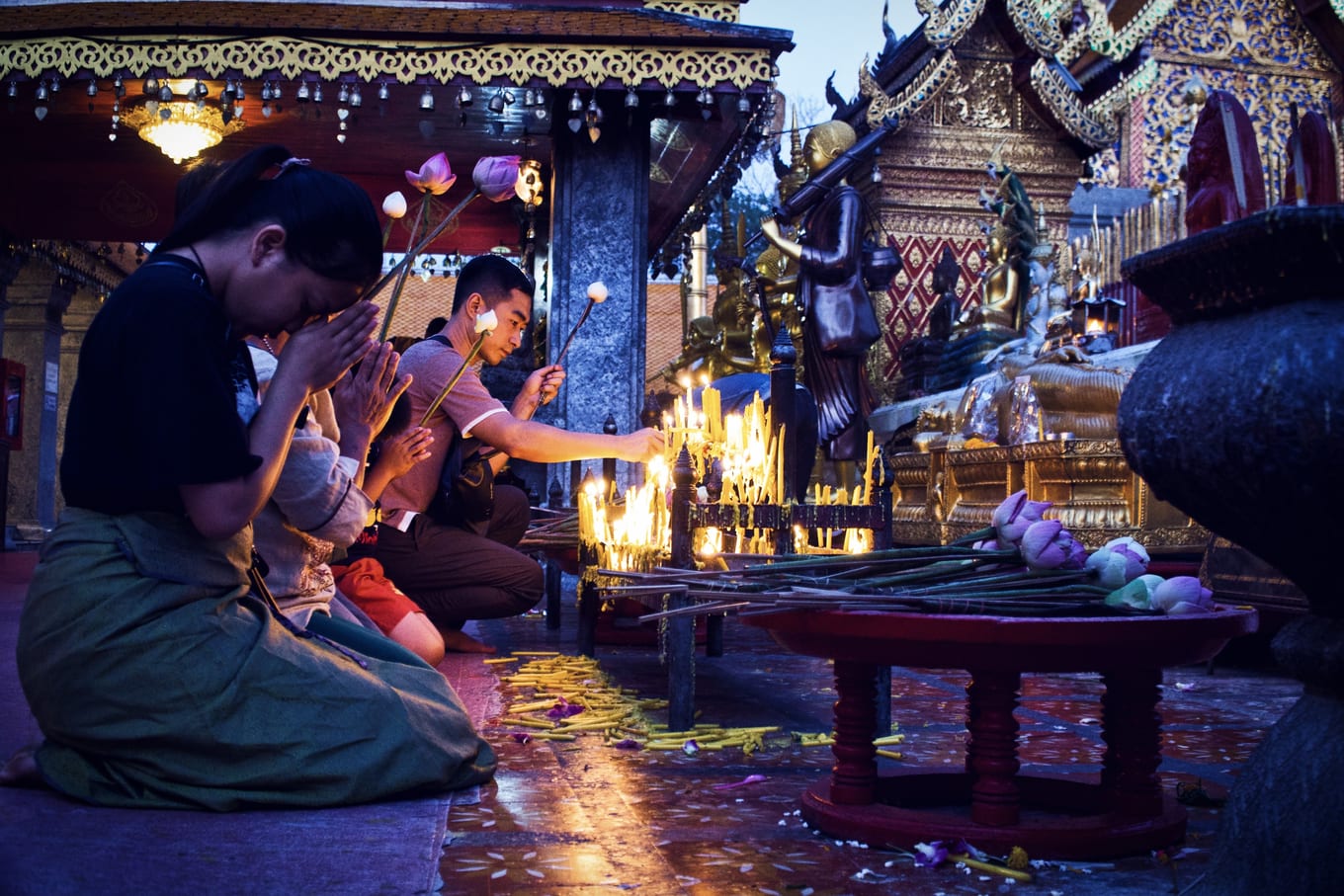Temple Hopping 101
Visiting temples, shrines, and other religious establishments is one way to immerse yourself in a nation’s culture. But these important landmarks are more than just a pretty building to look at and take photos of. Most, if not all, are sacred institutions, or even sanctuaries, for many locals and tourists. So if you are planning a visit to several temples soon, it’s best to take note of these tips and reminders – from temple offerings to what to wear. Bookmark this page for your next temple-hopping experience!
1. Dress modestly
Most, if not all, temples and shrines typically ask their visitors to enter in modest attire. In Bangkok specifically, major temples and palaces require guests to cover up – so off-shoulder clothing, mini-skirts, shorts, tattered jeans, and sleeveless tops are considered inappropriate and disrespectful.
As a general rule of thumb, try to cover up as much as you can – no matter the weather. If it is too warm to wear pants and a long-sleeve top, at least bring a scarf big or sarong.
2. Refrain from touching religious figures
It’s undeniable that the religious figures posted inside shrines and temples are captivating, and sometimes we can’t help but touch them. However, we do need to keep in mind that anything inside the temple may be treated as something sacred. For instance, in most Buddhist temples, guests are not at all allowed to touch, sit, or climb any of Buddha’s statues.
So before we feed into our curiosity, let’s make sure of the temple’s do’s and don’ts and do prior research beforehand.
3. Observe silence
General admission into a temple or shrine is not an open invitation to make noise or to behave inappropriately. Guests should keep in mind that temples all over the world are sacred and religious to many, so shouting, laughing and making unnecessary noise is definitely frowned upon as you might be disturbing any visitor who is praying or worshipping.
4. Know when it’s okay to snap a picture.
Sure, the reflex reaction to seeing something as fascinating and beautiful as a temple is to snap a photo – but bear in mind that these religious establishments may have rules against photo-taking. And if there aren’t any rules against photo-taking, it still good to keep the documentation to a minimum – unless you want to get a couple uncomfortable glares. So skip the flash, tripods and selfie sticks!
For instance, in India, a strict ban on cameras is imposed in central sanctums and most, if not all, holy worshipping areas. It’s good to do a bit of research beforehand as all temples and shrines have varying restrictions.
5. Be respectful at all times
If we haven’t said it enough – always keep in mind that you are in a consecrated area, a place where people go to seek spiritual guidance. So turn off your phones, remove your earphones, hats, and please, don’t smoke.
Give respect not only to the temple but also to the people around you. Be conscious of your actions in the temple because any hint of discourtesy might cause offense to the people surrounding you and the temple itself. There might be a lot of restrictions during this part of your trip. But know that following these simple rules are key to an exceptional experience.
6. Burn Incense
If you practice Buddhism, Hinduism, or Jainism, keep in mind to burn incense and feed the Buddha. Whether you’re praying for luck or repenting for your since, burning incense is common courtesy.
Temples typically provide incense for everyone. They say the more incense you light, the more time you get to pray to the gods of the temple. However, only light incense you’ve purchased as it is said that if you light someone else’s, it means you are to inherit their sins.
7. Arrive at temples clean and purified.
“You come in physically clean, you come out spiritually cleansed.” Though there are no specific restrictions about this and there’s no way to tell if you’ve showered before entering, it is proper to come into sacred sanctuaries clean.
Some temples, particularly in Japan, have a small pavilion with a basin filled with water where you can purify yourself before approaching the shrine. Though you aren’t required to, it is recommended to bathe and cleanse yourself before entering the temple.
8. Buy offerings to bring to the temple.
If you’re visiting the temple to give thanks for all your blessings, do it with an offering. This way, you can courteously offer your prayers and appreciation for the gods’ kindness.
Though not compulsory, presenting offerings to the temple deities is a form of respect. It is said that the more offerings you bring, the more you will please the gods, and therefore result in blessings and fulfillment of your prayers.
9. Provide a donation, if desired.
Donations, of course, are not a requirement. However, it is one way you can express your gratitude to the temple and the gods for providing you with an enriching experience.
This donation will go a long way and will not only serve you and your prayers, but as well as the preservation of the establishment. Consider this a contribution to the country where it stands, so that more and more people will get the chance to witness the temple in the years to come.
10. No two temples are alike
As every temple or shrine is dedicated to praise a different god or religion, the rules and restrictions vary for each. Though it pays a great deal to be respectful and offer blessings, doing your own research before making a temple visit will help you maximize this cultural experience.





























